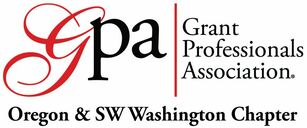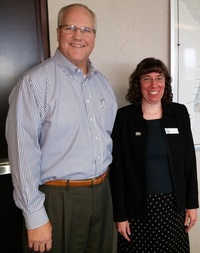Potential clients sometimes ask if I can work on a commission basis: if the application is successful, I will get a percentage of the award. At first, it sounds like a win for everyone because the nonprofit does not spend any money on an unsuccessful application, while the grant professional has the potential to earn a far higher rate. What is 10 percent of a million dollars? Let me get my calculator.
This proposition may be tempting, but the grant professional must first understand whether commission-based grant writing is a win-win or a violation of bedrock ethical principles in our profession. Industry standards indicate the latter.
Four Good Reasons Not to Take Commissions
Commission- or percentage-based proposal development is considered a grave ethical lapse by the fundraising community. In their book Prepare for the GPC Exam, Annarino, et al. provide four good reasons not to do it:
Foundations and government entities expect their funds to go to costs incurred in program delivery. Funding requests may include indirect costs, if allowed, such as rent or accounting systems. They may not, however, include prior fundraising costs. This is the first and foremost reason commission-based grant writing does not meet professional standards.
Commissions also encourage nonprofits to reach beyond what they can accomplish. If the agency cannot afford to pay a grant professional, it probably cannot afford the fundraising, operating, and financial systems necessary to deliver and report on the project outcomes! The converse is also true; commissions encourage inexperienced grant writers to take a gamble on an application they are not prepared or qualified to write.
Still not convinced?
Could it be that grant writers are just fuddy-duddies, unwilling to encourage innovation and take risks? On the contrary, we love innovation but not on ethically shaky grounds. Our colleagues at Association of Fundraising Professionals (AFP) agree. AFP states percentage-based compensation can lead to putting self-interest over the organization’s good, violating the self-inurement principle.
“By law, compensation based on skill, effort and time expended, remunerated by salary or fee, does not constitute personal inurement. Conversely, AFP believes that a commission or percentage based compensation or a finder’s fee breaches the no-inurement principle and is, therefore, a violation of its Standards for six specific reasons.”
You can read the six reasons here, but know that winding down the road towards self-inurement (or even the potential for such self-dealing or appearance of impropriety) leads to a loss of mission focus and an irreparable loss of donor trust.
The Opportunity
On the positive side, we have the opportunity every day as grant professionals to help organizations move toward strategic, sustainable, and ethical operations. If someone has a great but small organization, let us write a capacity building grant. If they are not ready yet, we have organizational readiness materials that can help them lay the groundwork for future success. Taking the time and making an effort to produce sustainable results will pay off in the end!
Your Role as an Employee
The vast majority of grant professionals are employees working within the nonprofit. How do these principles apply to agency staff? While salaried employees will not face the dilemma of commission-based fundraising, the issues raised can be used to frame common fundraising questions. Does the organization have the capacity to implement the program? Are we applying strategically or “chasing dollars?” Is staff time being used effectively and efficiently? These questions will ultimately reduce staff burnout and help the organization be more successful in meeting its mission.
Bio
Arthur Davis, GPC is an experienced grant writer for human services, education, and workforce development nonprofits. Arthur learned grant writing while earning his MBA and Certificate in Nonprofit Management at Portland State University. Current clients include Urban League of Portland, Catholic Charities of Oregon, Big Brothers Big Sisters, Oregon Human Development Corporation, Oregon MESA, and Constructing Hope. He teaches for-credit and continuing education classes in grant writing at Portland Community College. He has extensive experience in capacity building applications and has presented locally and nationally on the subject. Arthur served as treasurer for Grant Professionals Association of Oregon & SW Washington for the past three years and currently serves as the conference planning and strategic relations coordinator. Learn more at www.arthurdavisconsulting.com
This proposition may be tempting, but the grant professional must first understand whether commission-based grant writing is a win-win or a violation of bedrock ethical principles in our profession. Industry standards indicate the latter.
Four Good Reasons Not to Take Commissions
Commission- or percentage-based proposal development is considered a grave ethical lapse by the fundraising community. In their book Prepare for the GPC Exam, Annarino, et al. provide four good reasons not to do it:
- Most funders do not allow commissions.
- It encourages organizations to apply for grants for which they may not be ready.
- It encourages grant writers to prepare applications beyond their level of professional expertise.
- The commission does not reflect the amount of work in proposal development.
Foundations and government entities expect their funds to go to costs incurred in program delivery. Funding requests may include indirect costs, if allowed, such as rent or accounting systems. They may not, however, include prior fundraising costs. This is the first and foremost reason commission-based grant writing does not meet professional standards.
Commissions also encourage nonprofits to reach beyond what they can accomplish. If the agency cannot afford to pay a grant professional, it probably cannot afford the fundraising, operating, and financial systems necessary to deliver and report on the project outcomes! The converse is also true; commissions encourage inexperienced grant writers to take a gamble on an application they are not prepared or qualified to write.
Still not convinced?
Could it be that grant writers are just fuddy-duddies, unwilling to encourage innovation and take risks? On the contrary, we love innovation but not on ethically shaky grounds. Our colleagues at Association of Fundraising Professionals (AFP) agree. AFP states percentage-based compensation can lead to putting self-interest over the organization’s good, violating the self-inurement principle.
“By law, compensation based on skill, effort and time expended, remunerated by salary or fee, does not constitute personal inurement. Conversely, AFP believes that a commission or percentage based compensation or a finder’s fee breaches the no-inurement principle and is, therefore, a violation of its Standards for six specific reasons.”
You can read the six reasons here, but know that winding down the road towards self-inurement (or even the potential for such self-dealing or appearance of impropriety) leads to a loss of mission focus and an irreparable loss of donor trust.
The Opportunity
On the positive side, we have the opportunity every day as grant professionals to help organizations move toward strategic, sustainable, and ethical operations. If someone has a great but small organization, let us write a capacity building grant. If they are not ready yet, we have organizational readiness materials that can help them lay the groundwork for future success. Taking the time and making an effort to produce sustainable results will pay off in the end!
Your Role as an Employee
The vast majority of grant professionals are employees working within the nonprofit. How do these principles apply to agency staff? While salaried employees will not face the dilemma of commission-based fundraising, the issues raised can be used to frame common fundraising questions. Does the organization have the capacity to implement the program? Are we applying strategically or “chasing dollars?” Is staff time being used effectively and efficiently? These questions will ultimately reduce staff burnout and help the organization be more successful in meeting its mission.
Bio
Arthur Davis, GPC is an experienced grant writer for human services, education, and workforce development nonprofits. Arthur learned grant writing while earning his MBA and Certificate in Nonprofit Management at Portland State University. Current clients include Urban League of Portland, Catholic Charities of Oregon, Big Brothers Big Sisters, Oregon Human Development Corporation, Oregon MESA, and Constructing Hope. He teaches for-credit and continuing education classes in grant writing at Portland Community College. He has extensive experience in capacity building applications and has presented locally and nationally on the subject. Arthur served as treasurer for Grant Professionals Association of Oregon & SW Washington for the past three years and currently serves as the conference planning and strategic relations coordinator. Learn more at www.arthurdavisconsulting.com


 RSS Feed
RSS Feed